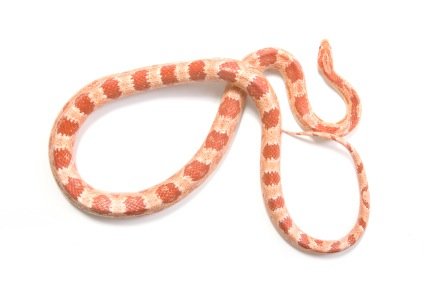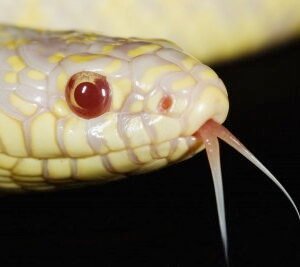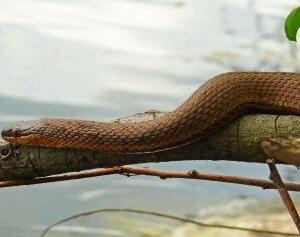Understanding the Corn Albino Snake
The corn albino snake, a captivating morph of the eastern corn snake, is scientifically classified as Pantherophis guttatus. This particular morph is renowned for its striking and unique coloration, which features a combination of a brilliant ivory background and vibrant orange saddles. This contrast not only makes the corn albino snake visually appealing but also sets it apart from other corn snake morphs, which may display variations of color and pattern.
Typically, corn albino snakes reach an adult size of about 4 to 5 feet in length and can weigh between 3 to 5 pounds. Their slender body structure, combined with their smooth, scaleless skin, makes them an attractive choice for both novice and experienced snake enthusiasts. The combination of their size, weight, and eye-catching appearance contributes to their popularity within the reptile community, as they are often considered easy to care for and maintain.
The albino gene responsible for the distinct appearance of the corn albino snake is a recessive trait. This genetic mutation results in a lack of melanin, which gives rise to their unique color pattern. Breeders often employ selective breeding techniques to produce more corn albino snakes, which has resulted in their prevalence within the pet industry. This increase in availability has raised interest among hobbyists who seek to add these stunning snakes to their collections. As conscientious breeding practices continue, the corn albino snake remains a favorite among reptile enthusiasts, who appreciate both its beauty and gentle temperament.
Care and Maintenance Guidelines
Keeping a corn albino snake as a pet requires careful consideration of its habitat, diet, and overall well-being. To begin with, the ideal tank size for a corn snake is at least 40 gallons, ensuring ample space for movement and exploration. A secure lid is essential, as these snakes are known for their climbing abilities. The substrate should consist of materials like aspen shavings or coconut fiber, providing a comfortable environment while facilitating burrowing instincts.
Heating is a crucial aspect of habitat setup, as corn snakes are ectothermic and rely on external heat sources to regulate their body temperature. A temperature gradient of 75-80°F on the cooler side and 85-90°F on the warm side should be maintained, utilizing heat mats or basking lights. Proper humidity levels, ideally between 40-60%, can be achieved through regular misting and the inclusion of a water bowl large enough for soaking. This humidity is particularly important during shedding cycles.
Concerning dietary requirements, corn albino snakes primarily feed on rodents, such as mice or rats, depending on their size. It is recommended to follow a feeding schedule based on the snake’s age and weight; juveniles typically require feeding every 5-7 days, while adults can be fed every 10-14 days. It is crucial to provide appropriately sized prey, ensuring the food item is no larger than the thickest part of the snake’s body to prevent potential health complications.
Understanding the behavioral nuances of corn snakes enhances the ownership experience significantly. These snakes are generally calm and can be handled regularly to promote socialization. However, it is vital to approach them gently and avoid sudden movements, as this may induce stress. Regular health checks for signs of trouble, such as weight loss, abnormal shedding, or changes in behavior, are essential for timely intervention. Preventative care includes maintaining a clean habitat and ensuring proper husbandry.





